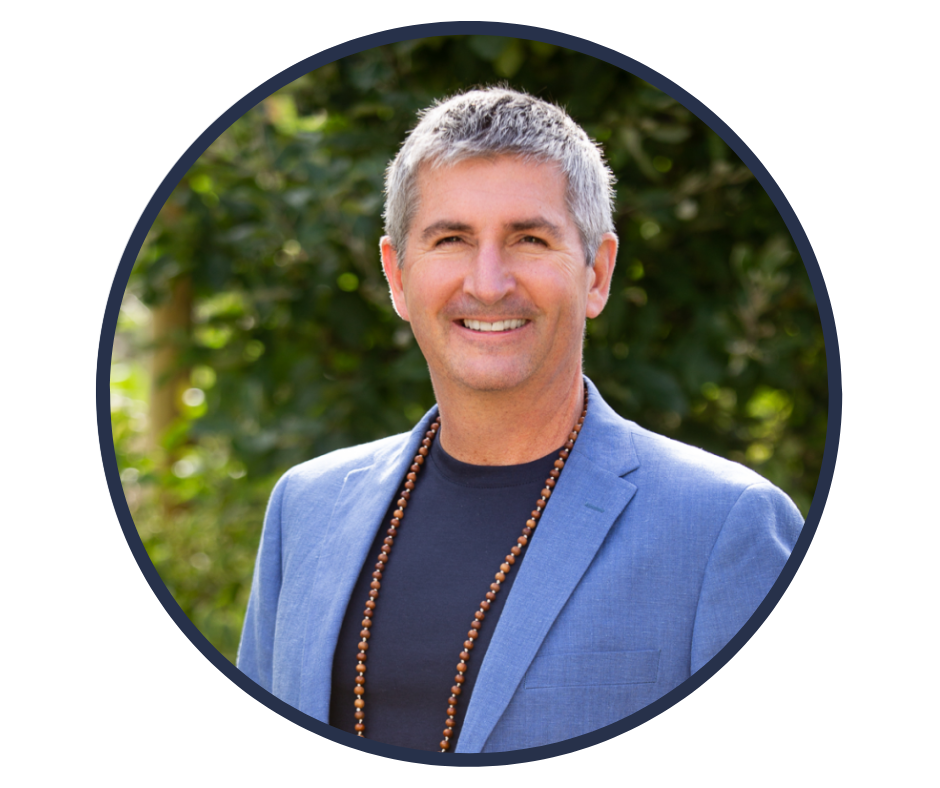Yoga and Science in Pain Care - Food for Thought
By: Sneha Nemichand ∙ Estimated reading time: 6 minutes
By: Sneha Nemichand ∙ Estimated reading time: 6 minutes
This is the 10th blog post in a series based on the Yoga and Science in Pain Care Book Club, a 15-part course based on the book by the same title, by Neil Pearson, Shelly Prosko, and Marlysa Sullivan. You can find the blogs corresponding to Chapter 1, Chapter 2, Chapter 3, Chapter 4, Chapter 5, Chapter 6, Chapter 7, Chapter 8, and Chapter 9.
Different views of food
In the chapter, Ingredients for Pain Care: Nutrition and Yoga, of the book, Yoga and Science for Pain Care and the accompanying online course on Embodia, Ingredients for Pain Care - Nutrition and Yoga author Matt Erb provides several different lenses through which we view food.
These include the:
- Lens of composition (fiber, protein, carbohydrates, nutrients)
- Lens of energy (process of digestion transforms food into energy)
- Lens of nutrigenomics (food carries information that can influence the expression of DNA and genes)
- Lens of yogic teaching (food and all beings are interrelated and interconnected, contributing to a cyclical pattern of life and death)
I find this framework useful and when I apply it to myself, I notice that I have viewed food through different lenses at different points in my life which influenced what and how much I consumed. It also shows that like all other relationships, the one with food and nutrition could change and evolve through life.
Absorption of nutrients from food
Through the chapter and the webinar, I learned that the process of digestion actually starts with the mind and the “cerebral or cephalic phase” of digestion initiates the digestive process, for instance, with a salivary response when thinking about eating.
Consuming “good food” is obviously very important for the body to gain “good nutrition”, however, the appropriate functioning of internal processes that break down, transport, and absorb nutrients is just as important. Stress, medications, food sensitivities or allergies, parasites or foreign bacteria, and food availability and diet choices impact these processes.
Some of the internal processes and factors for “good nutrition” include saliva production, adequate chewing, gastric acid and bile production, a healthy mucosa (inner wall of the digestive tract), digestive enzymes, and a balance of bacteria in the gut (gut microbiota).
Mass manufacturing of food has prompted consumer behaviors to purchase easily available, convenient options that are cheaper but offer limited nutritional value and impact the body’s (i) internal processes and factors necessary for “good nutrition” and (ii) systems associated with the physiology of pain.
Stress, inflammation, immune system and physiology of pain
When faced with a stressor, our body releases cortisol, adrenaline, and norepinephrine to mobilize the body’s resources for an adaptive response, and food intake and digestive processes are decreased in favor of fight/flight responses. Once the stressor passes, these systems and hormone levels return to normal. Unfortunately, when the body is subject to a chronic stress state, this response of mobilizing the body’s resources can get stuck in an ‘on state’ and become dysregulated.
When faced with a real or potential threat, sensory neurons called nociceptors send signals to the spinal cord and brain for interpretation. If the conclusion is a threat, the signals will trigger appropriate behaviors/responses in the body.
Pain may be one of these responses. The physiology of pain is linked to both inflammation and the immune system.
Our body responds to injury, strain, or stress and defends against irritants or unfavorable invaders by:
- Activating the local immune cells (sometimes traveling immune cells are also sent to the area of injury)
- Triggering the inflammation response for tissue repair and healing processes to begin
The immune cells and inflammatory mediators increase the sensitivity of nociceptors and also interact with neurotransmitters and neural cells to facilitate the body’s defensive response.
Unfortunately, in chronic pain states, the increased activity and sensitivity of the nociceptors can get “stuck on”, whereby normally innocuous stimuli produce pain, and trigger other defense mechanisms, further contributing to the physiology of pain. Moreover, in the short term, cortisol can assist in the control of inflammation, but in chronic stress states it may compromise inflammatory and digestive processes.
Stress itself may also increase inflammation, contributing to the potential for pain.

Food and nutrition on inflammation, immune system and physiology of pain
Coping patterns in relation to stress and/or pain intertwine with a diet response that can continue to make the problem of pain worse. For instance, an increased intake of nutrient-dense high caloric foods (commonly consumed during times of stress), promotes weight gain. For some people, this may increase pain, as there is a link between food consumption, obesity, inactivity and pain.
High sugar intake and processed carbohydrates also increase the potential for inflammation and create an imbalance in the gut microbiome states (dysbiosis). Dysbiosis impacts the digestive processes (impacts absorption of nutrients) and neurotransmitter production, which could impact peripheral pain perception, inflammatory processes in the body and support to the immune system.
Research also shows links between stress, cortisol, inflammation, and insulin processing such that eating high amounts of processed sugar and flour during times of high stress has stacking negative effects on health.
Because food and nutrition influence the underlying chemistry associated with these processes, they can be utilized in favorable ways to positively impact inflammation, boost the immune system, support positive mood states, and reduce pain.
Where to start
Considering the relationship to food and interaction with pain is highly individualized and complex, a “chronic pain diet” cannot be prescribed; anything marketed in this way should be considered with caution. That said, the following are useful guidelines or starting points for you to consider.
Include:
- Foods high in omega-3 fatty acids, containing ginger, quercetin, and tryptophan
- Whole foods wherever possible (reduce the intake of processed food)
- Foods containing essential nutrients of vitamins C, E, B6, A, and D, folate/folic acid, iron, selenium, and zinc
- Movement and stress management practices such as exercise, meditation, mindfulness, yoga (which includes movement, meditation, mindfulness, stress management practices)
Putting it into practice
In the online course when Matt Erb walked us through a mindful eating exercise, I had an embodied experience of uncovering my relationship to food. As I held the date that I wanted to eat, my body (mind) prepared to consume it through salivation and my mental decision to chew versus swallow was almost automatic. Upon swallowing, I couldn’t place how far the date reached within my insides. The mere act of slowing down while eating uncovered many levels of awareness in my body including my sense of smell and hunger and overall, the date tasted much sweeter when I slowed down!

Since then, I have noticed that this practice of eating mindfully also builds interoceptive awareness which can promote positive eating behaviors and overall well-being. For example, noticing what I experience in my body and my mind while considering my choice (what) of eating could propel buying other beneficial foods, identifying satiation could limit overeating and paying attention to the after-effects of consuming foods could inform me of what doesn't serve my needs.
Mindful eating with Matt Erb
I began examining the labels on food products when I first moved to the United States from India. I flipped the product to read the back for two reasons, primarily to ensure what I was buying would conform to my lifestyle as a vegetarian and secondly to know how much nutritional value it offered.
This practice served as a foundation for my buying and eating habits and my curiosity to learn more about the food I consumed. When I learned more about the consequences of mass manufacturing of food products not only on our health but also on our environment, it prompted me to buy locally and consider making what I needed, if it was possible. Additionally, my yoga practice cast an influence on me exploring my relationship with food with compassion. I now routinely examine where I buy food, why I buy it, how I eat it and when I eat it to find opportunities to align my food habits with my personal values and my body’s needs. For example, when I am stressed, I know coffee meddles with my digestive system so I switch to consuming tea instead. When I realized making granola at home was easy while those in store had a significant amount of added sugars, I set aside some time to make it myself.
Exploring the different aspects of buying and consuming food can seem intimidating at first so I encourage you to pick one practice or one food product to start uncovering your current relationship with food, and/or the relationship of what you ingest and how you ingest it to pain. Getting started is the hardest part but once you do, it's worth the discovery. Just remember to reflect with compassion and curiosity because this path is lengthy and constantly evolving.
Click here to learn more about Chapter 10
of Yoga and Science in Pain Care
or
Click here to view the complete series
References:
- Pearson, N., Prosko, S., Sullivan, M. (2019) Yoga and Science in Pain Care: Treating the Person in Pain. Jessica Kingsley Publishers.
- Yoga and Science. In Pain Care: Chapter 10 online course March 2021. Embodia.
---
Date published: 15 Jan 2024
Last update: 16 Jan 2024

PT
Matt Erb is a physiotherapist with extensive experience in the fields of mind-body medicine. He has specialization in working with persons experiencing co-occurring somatic and mental health conditions. He is a leader in translating the concepts that underpin the integrative healthcare movement into rehabilitation therapy practice and is an advocate for equipping therapists to safely support and work with the whole person experience.
Matt serves as an Associate Clinical Director with The Center for Mind-Body Medicine (Washington DC). He is also founder of Embody Your Mind, a small teaching and consulting business, maintains a clinical practice in Tucson, AZ at Simons Physical Therapy, and is an instructor/guest lecturer for the University of Arizona Departments of Psychiatry, Family Medicine, and Integrative Medicine.

Wellness teacher
Sneha is a wellness teacher and a continuous improvement professional currently based in Toronto, Canada. Through her work and her teaching, she creates a nurturing and safe space for individuals to build self-awareness, find personal growth and connection with themselves plus their community. Sneha draws from the wisdom of yoga, pranayama and meditation, and sprinkles her love for life-long learning to create a space for silence, curious exploration and relaxation for her clients.
https://www.connectandgrowyoga.com/

MPT, C-IAYT
Marlysa is a physiotherapist and yoga therapist with over 15 years of experience working with people suffering with chronic pain conditions. She is an Assistant Professor in Yoga Therapy and Integrative Health Sciences at Maryland University of Integrative Health and holds an adjunct position at Emory University, where she teaches the integration of yoga and mindfulness into physical therapy practice in the DPT program. She is also the author of Understanding Yoga Therapy: Applied Philosophy and Science for Well-being and co-editor of Yoga and Science in Pain Care: Treating the Person in Pain as well as several peer-reviewed articles.
Marlysa has been involved in the professionalization of the field of yoga therapy through the educational standards committee of IAYT, which helped to define the competencies for the field, and in characterizing the yoga therapy workforce through research. Her research interests focus on defining the framework and explanatory model for yoga therapy based on philosophical and neurophysiological perspectives.

PT, C-IAYT, PCAYT
Shelly has been helping people recover and flourish since 1998 as a physiotherapist, yoga therapist, educator, author and pioneer of PhysioYoga, blending evidence-informed body-mind-breath-spirit-heart centered practices and principles, such as yoga, into physiotherapy with a focus on chronic pain, pelvic health, compassion in healthcare and professional burnout. She is on faculty at several therapy programs, presents at medical conferences globally, contributes to academic research and writing, provides classes, courses and resources for the general population, and offers continuing education courses and mentorship for professionals.
She considers herself a lifelong student and emphasizes the immense value gained from clinical experience and learning from those she serves, the professionals she teaches, and the colleagues with which she collaborates.
Shelly is the co-editor/author of the book Yoga and Science in Pain Care: Treating the Person in Pain and has authored numerous book chapters in a variety of rehabilitation textbooks.
She maintains a clinical practice in Sylvan Lake, Alberta and believes compassion (including self-compassion), meaningful connections, spending time in nature and sharing joy are powerful contributors to rehab and well-being.
Visit www.PhysioYoga.ca to learn more.

PT, MSc(RHBS), BA-BPHE, C-IAYT, ERYT500
Neil is a physical therapist, yoga therapist, author, researcher, Clinical Associate Professor at the University of British Columbia, faculty in three IAYT-accredited yoga therapy programs, board member for the International Association of Yoga Therapists and pain care advocate. He conducts research into the effects of yoga on veterans with chronic pain and people with osteoarthritis. Neil is the recipient of awards honouring his work in pain care, patient education and physiotherapy by Queen’s University, the Canadian Pain Society and both provincial and national physiotherapy associations, including the Canadian 2021 Medal of Distinction.
Neil is a consultant to Partners in Canadian Veterans Rehabilitation Services, and to Lifemark’s 300+ clinics in Canada. Neil is a past board member for Pain BC, Canada’s premier non-profit transforming the way pain is understood and treated. He co-authored – Yoga and Science in Pain Care 2019, authored the patient education ebook, Understand Pain Live Well Again in 2008, and is lead contributor to many free patient resources offer by Pain BC.
For more information and course offerings, see www.paincareaware.com